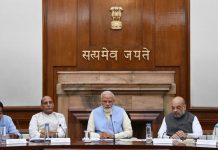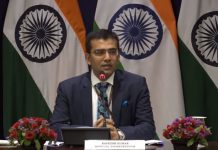
Edited excerpts from an interview:
Photographers are known to be romantics in search of ancient cities, trying to uncover coffers of rich tradition. Is this aspect, how would you define your relationship with Rajasthan?
It’s very special in the sense that it’s the most vibrant, colourful state; the backdrop of the Aravalis, warmth of the villagers, historical setting and of course huge forts and palaces add to the mystique. All of this always attracted me as a child. The landscape and barrenness that the state offers is splendid. It’s a photographer’s paradise but at the same time, a major challenge. Besides, it was my first attempt at doing aerial photography in Rajasthan which added a dimension of freshness.
The pictures reflect an attempt to record the old way of life and how it is now altering. What major changes did you discover have gained root, replacing old conventions?
The whole idea was to discover and travel to areas where the outside world influence is not present or if at all it is, it has a minimal impact on the society. About how it influences their culture, let me tell you about Pushkar. When I visited 30 years ago, there were a lot of Indian tourist photographers and only a few foreigners. But when I visited after a gap of a few years, things had completely changed. I saw a tent colony where one-day charges were around Rs 7,500 and you had helicopter services to see the mela site from the top. More and more people have started making it a commercial affair. This is frightening. You are taking away their culture and depriving these people. Another thing is, every time you lift your camera to click pictures, you’ll find the camel herder asking for bakshish. I think it’s shameful that we have forced these people to behave this way. Rajasthan to me is about the culture which has the least influence of the outside world, and that is how I like it.
What was the idea behind mounting cameras on high-flying kites and taking pictures from hot air balloons?
Growing up, all I could associate Rajasthan with were the heavily bejewelled women, men with turbans and long moustaches, maharajas and palaces. It’s kind of a formula book with postcards and posters showcasing this. When I began travelling around Rajasthan, I kept thinking of an idea to portray my thoughts from a different perspective, one that people have not yet seen. This is where the idea of aerial photography came in. Once you look down from that vantage point, it gives everything a different vision and purity.
The bond between the tribal communities and the wildlife in the area is very evident in the book. How do you go about capturing these intimate details?

Rajesh Bedi
Roli Books
207 pp; Rs 3,995
It’s certain that my first love is nature and wildlife. When you travel in Rajasthan and meet say, the Bishnois, you discover details like they are vegetarians and averse to cutting down trees or killing animals. The Great Indian Bustard, of which there are now less than 300 left in the world, have the highest population in the Thar Desert and that is because of the religion of the Bishnois. They’ve been moulded to love and honour nature for centuries. One of the most moving images I managed to capture was of a Bishnoi woman offering suckle to a young chinkara gazelle found abandoned in a nearby field, along with her own child. So engaging and understanding the community is essential to get a glimpse into their way of life.













